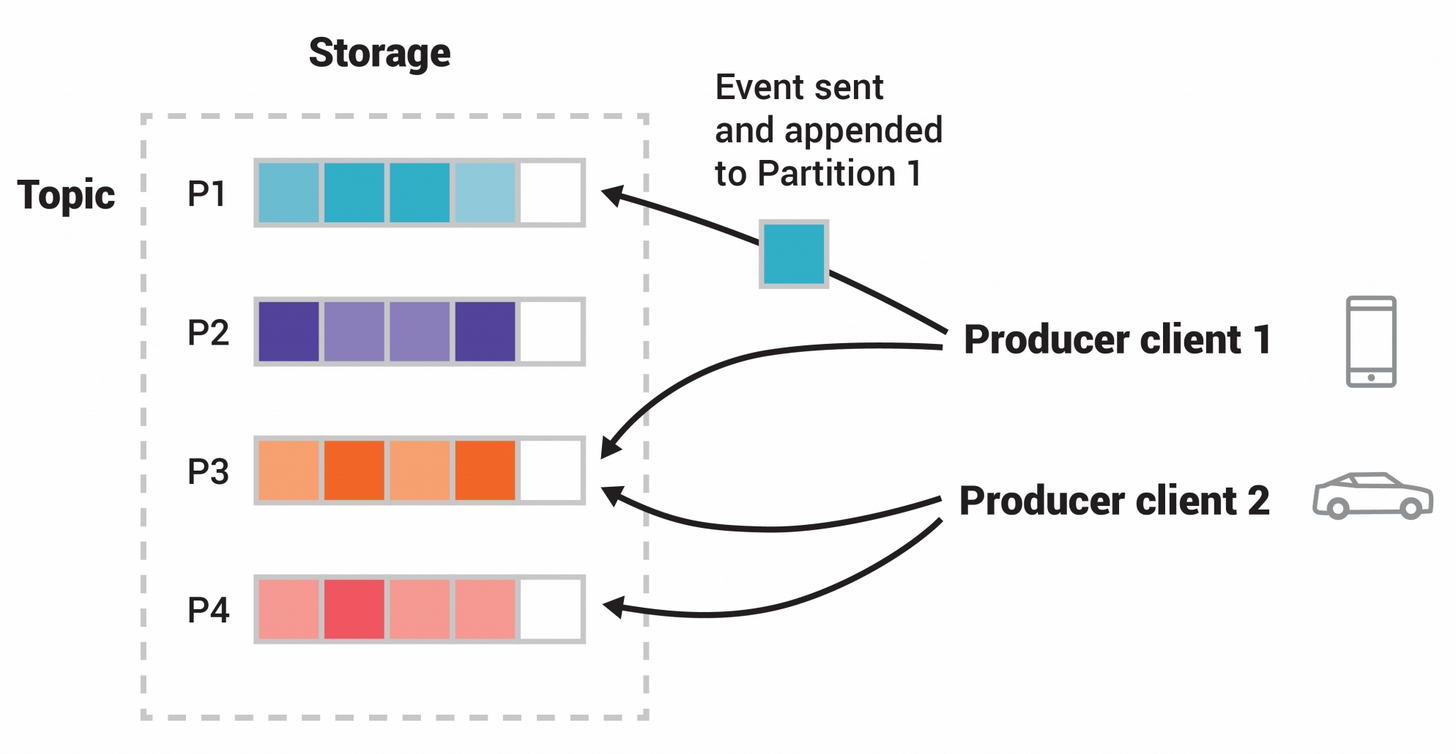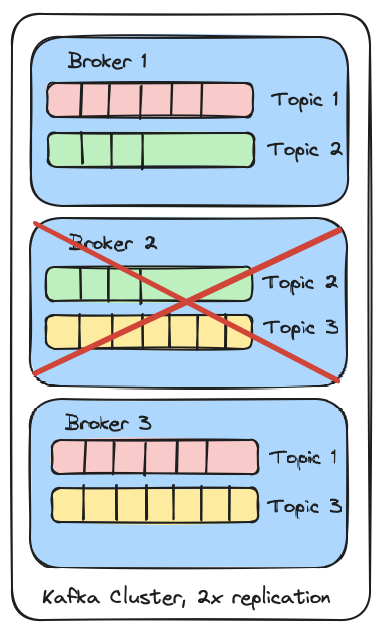Kafka architecture
Introduction to Apache Kafka

Mike Metzger
Data Engineering Consultant
Kafka components
- Kafka server
- A cluster of one or more computers
- Stores data
- Manages communications
- Can also integrate with other systems (databases, logs, etc))
- Kafka clients
- Read via Kafka consumer
- Write via Kafka producer
- Process data as required
Kafka server
- Storage, also known as the Kafka Broker
- Data written by producers is stored and organized via topics
- Topics are partitioned, or stored in separate pieces
- Messages / events stored in a given partition based on an event id
- Messages are retrieved in same order as written

1 Image sourced from https://kafka.apache.org/intro
Partitions & replication
- Kafka is fault-tolerant
- If one system goes offline, others can provide the requested data
- Max number of failures - 1 == replication factor
- Max replication factor == number of servers
- Copying partitions are how replication is handled

Example

- Kafka cluster with 3 brokers
- 3 topics defined
- 2x replication == can lose 1 system
- Broker 1 has copies of Topic 1 & Topic 2
- Broker 2 has copies of Topic 2 & Topic 3
- Broker 3 has copies of Topic 1 & Topic 3
- Each topic is shared across 2 brokers within the cluster
Example with 1 failure

- Broker 2 fails
- Replication factor 2x
- 2 - 1 == Can handle 1 failed system
- Each topic still has at least one copy on the cluster
Example with 2 failures

- 2 failed brokers
- Replication factor 2x
- More failures than supported (1 system)
- Topic 2 is no longer available in the cluster
- Topics 1 and 3 are still available, so not a complete failure
Let's practice!
Introduction to Apache Kafka

